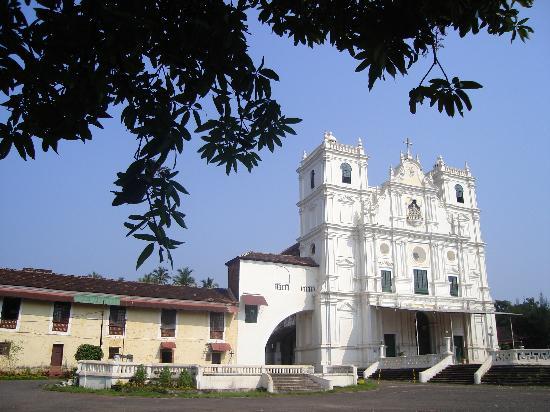Goa Visit Place
Goa Tourism
Places To Visit In Goa
 Margao: It is a typically crowded Goan town, with chaotic, noisy traffic and quite a few architectural reminders of its Portuguese past. Margao is Goa's second largest town and a bustling commercial centre.
Margao: It is a typically crowded Goan town, with chaotic, noisy traffic and quite a few architectural reminders of its Portuguese past. Margao is Goa's second largest town and a bustling commercial centre.
Surrounded by fertile farmland, the town of Margao was once a major religious centre, with dozens of wealthy temples and dharmshalas (dormitories). In fact the name Margao is thought to be the Portuguese corruption of the word Mathgram (from Math - a Hindu religious centre that used to exist there) However most of these were destroyed when the Portuguese absorbed the area into their Novas Conquistas during the 17th century.
Margao has an old-worldly charm about it because of its Portuguese churches, and some magnificent specimens of old Portuguese houses complete with shady balcaos (porches) and oyster-shell windows in its Borda area.
The Largo de Igreja, or the Church of the Holy Spirit as it is also known, dominates the entrance to the city, just north of the Municipal Garden square. The church area is surrounded by beautiful old residential houses still in pristine condition. The church was built by the Portuguese in 1675 and is one of the finest examples of late-Baroque architecture in Goa, boasting a pristine white façade and an interior dripping with gilt crystal and stucco.
Just within walking distance of the Church, is the famous "House of Seven Gables" or "Sat Burzam Ghor". This magnificent mansion was commissioned in 1790 by Sebastino da Silva, emissary and private secretary of the Portuguese Viceroy. Although only three of the seven gables remain today, they are enough to give the visitor an idea of the size of the original edifice.
The town has an excellent market area stretching from the south edge of the main square to within a stone's throw of the old railway station. The Bazaar centres on a labyrinthine covered area that's a rich source of authentic souvenirs and a good place to browse for some bargain shopping.
In the centre of the town is the Municipal Garden (known as Praça Jorge Barreto), around which most restaurants and office buildings are located. The colonial style red washed Municipal building built in 1905 and the Library lie on the park's south side. From this main square, bylanes lead to the bazaar and the area that used to be the fish market.
Margao's fish market was earlier located opposite the Municipal building and was a spectacular sight, with the fisherwomen from coastal areas of South Goa hawking their wares at the top of their voices, dressed in superbly coloured cotton sarees. The market has since been shifted to a complex located at the entrance of the city.
The road from the Largo de Igreja splits into two at the entrance to Margao, one going into the city proper and the other winding up towards towards another Margao landmark. This road called Calçada de Nossa Senhora de Piedade leads up to Monte Hill. There is a small chapel at the top of the hill which remains locked most of the time. But it is worth coming up here for a spectacular view of the Salcette countryside in general and Margao in particular.
The famous Colva beach is just 6 kms away from Margao, so most travellers coming to this area of Goa, tend to spend their time in the beach area, rather than enjoy the charms of Margao town itself.
There are some interesting places around Margao. About 3 Km. from the small village of Raia, which is on the road from Margao to the Borim bridge, is the Rachol Seminary and Church. Margao is also the last stop for a number of trains coming to Goa especially from Mumbai.
 How To Get There
How To Get There
By Rail: Margao's new Train station, the only stop in Goa for quite a few long distance express services on the Konkan Railway, lies 3 kms south of the town centre. The Reservation office (Monday-Saturday, 8.00 am-4.30 pm, Sunday 8.00 am- 2.00 pm) at the station is divided between the ground and the first floor. There is also a 24-hour Information Centre and round-the-clock pre-paid auto rickshaw stand outside the exit.
By Road: Local private buses to Colva and surrounding villages make stops at various places inside the town. Long distance buses to Panaji, Vasco and destinations outside Goa, stop and leave from the main Kadamba Bus Stand, 3 km away on the outskirts of the town.
Stay updated
Subscribe to our newsletter to get early notifications of our great offers and promotions!
